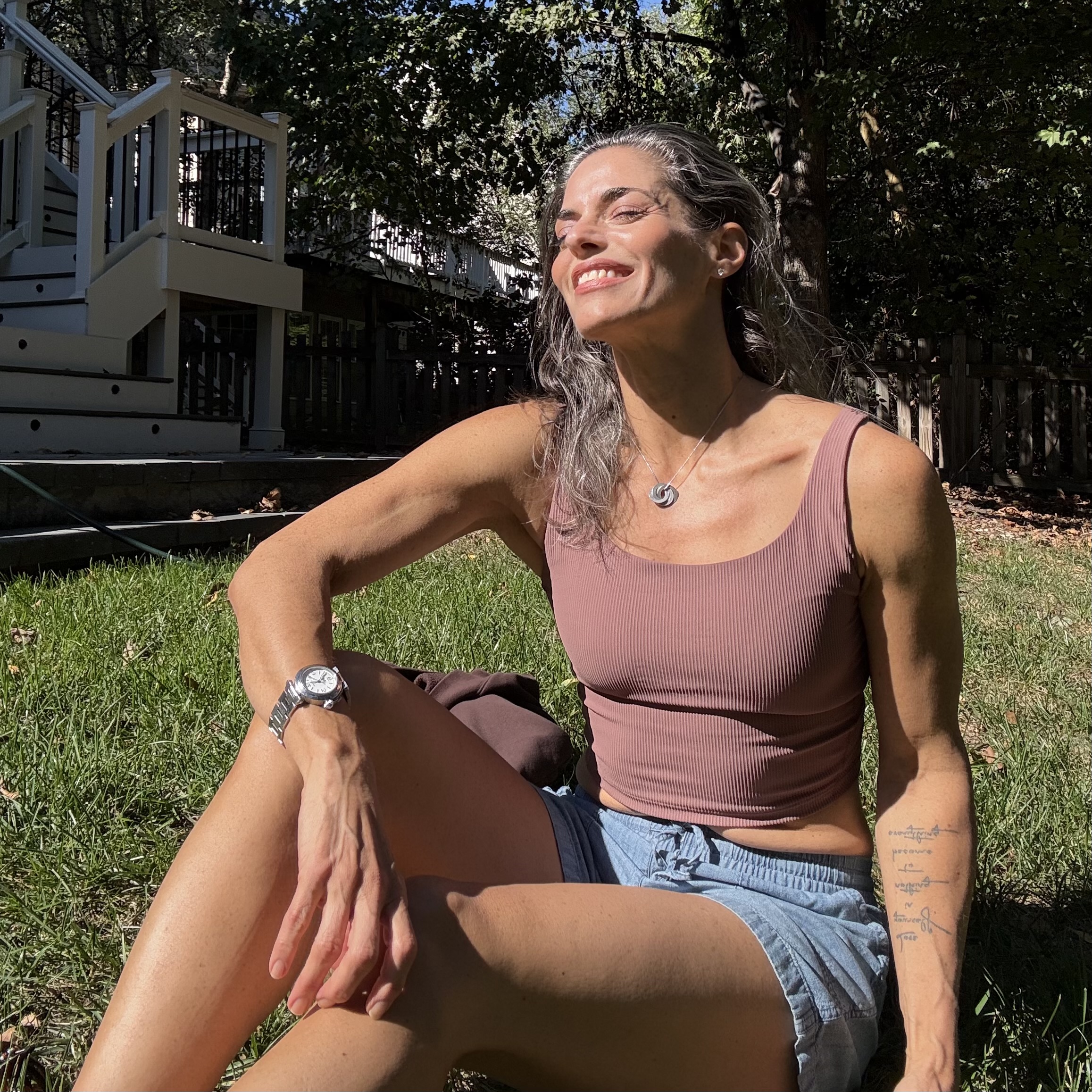Low in Vitamin D? Here's how to Fix That
Oct 09, 2025
Thank goodness for quarterly lab draws and doctor visits. I just did some lab work to make sure my hormones are balanced, and to my amazement and surprise, my Vitamin D is low. What! I've always prided myself on having a consistent Vitamin D score above 60, so for me to be in the low 30s is an eye-opener.
But now thinking about it and considering some symptoms I've been having: fatigue, joint pain, muscle aches and weakness; it makes sense that I might in fact have a Vitamin D deficiency. What! And so soon after summer?! If this sounds like you, read on.
Here are the signs of Vitamin D deficiency and what I'm doing to drive up my Vitamin D levels.

☀️ Signs You Might Be Low in Vitamin D
Vitamin D — often called the “sunshine vitamin” — is actually a hormone and a vitamin, and it's essential for bone strength, immune health, and even hormone balance. But because many of us spend more time indoors and wear SPF (both good things!), low levels are incredibly common — especially in women over 40. Here are some telltale signs your body might be running low:
1. Fatigue and low mood.
One of the first signs of deficiency is a deep, lingering tiredness that sleep doesn’t fix. Vitamin D plays a role in serotonin production — the neurotransmitter tied to mood and energy — which is why low levels are linked to depression and seasonal affective disorder (SAD). My energy levels are generally good, but then there are those days where I'm just wiped out and I don't know why. Now I do.
2. Muscle weakness or aches.
Vitamin D helps muscles contract efficiently and supports calcium absorption in muscle tissue. Low levels can make you feel weaker, achier, or less stable during workouts — even contributing to slower recovery. This makes total sense, as I've been challenged recently to hit my weightlifting goals in the gym. It's so important to get the right fuel - in this case, sunlight - in order to see gains in the gym.
3. Bone or joint pain.
Because vitamin D regulates calcium and phosphorus — the minerals that keep bones strong — a deficiency can cause diffuse pain in the lower back, hips, or legs. Over time, chronic low D can contribute to osteopenia or osteoporosis. THIS has been a big one for me this summer. I've really felt my joints feel creakier and there's been more physical pain in my body than usual. I'm looking forward to monitoring this and seeing my pain levels go down. Significantly.
4. Frequent illness or slow healing.
If you seem to catch every cold that goes around, or your cuts take longer to heal, low vitamin D could be to blame. It supports immune function by helping immune cells fight off viruses and bacteria efficiently. I haven't honestly been sick this season, but it's great that I have these results in hand as we're heading into cooler months, so I can up my Vitamin D levels and avoid illness.
5. Hair loss or thinning.
Vitamin D is involved in hair follicle cycling, and low levels have been associated with hair shedding or slow regrowth — particularly in women during midlife when hormone shifts are also at play. This is difficult to gauge because at 54, I do have some thinning, but is it more than usual? Hmm. Not entirely sure.
6. Mood changes or “brain fog.”
If you’ve noticed irritability, anxiety, or trouble concentrating, that might also point to low vitamin D. Adequate levels help regulate neurotransmitters and reduce inflammation in the brain. I strive to keep my mood elevated with regular meditation and journaling, both of which are fantastic for this. And ever since I gave up added sugar and gave up on alcohol, I don't really get brain fog. It's a trade off I'm willing to make, daily.
🌞 How to Boost Vitamin D Naturally
Okay, so if you're in the low Vitamin D camp with me, how can we fix this? The easiest and most natural way to raise your vitamin D is through sunlight. Just 10–20 minutes of midday sun on your arms and legs a few times a week can do wonders — though this varies depending on your skin tone, latitude, and season.

This is going to be my approach. Weather permitting, I'm going to spend time on my deck taking in sunshine (like eating lunch outdoors), and am going to increase my daily walks with my dog and other ways to be outdoors during peak hours (with SPF on, of course) so that I can optimize for maximum sun exposure and increase Vitamin D levels.
I'm also going to increase Vitamin D nutrition sources like wild-caught salmon, sardines, mackerel, egg yolks, and raw milk, which provide smaller but steady amounts. There are also fortified options such as mushrooms exposed to UV light or certain plant milks.
AND I'm going to take a Vitamin D Supplement. For many women — especially those over 45, living in northern climates, or who use daily SPF — a vitamin D3 supplement can be helpful to maintain optimal levels (most functional medicine doctors recommend checking labs before dosing). Pairing D3 with vitamin K2 enhances calcium absorption into bones rather than arteries, making the combo particularly beneficial for bone and heart health.
Bottom line: a few mindful habits — a little sun, smart food choices, and the right supplement if needed — can make all the difference for stronger bones, a steadier mood, and a brighter sense of vitality year-round.
✨ Let’s age well, naturally. Together.
x
Juliana
PS - if you enjoyed this blog post, 👇 sign up for our monthly newsletter! 👇 We drop all kinds of strategies on how to age well: nutrition, exercise, sleep, HRT, clean beauty, facial exercise & more.






